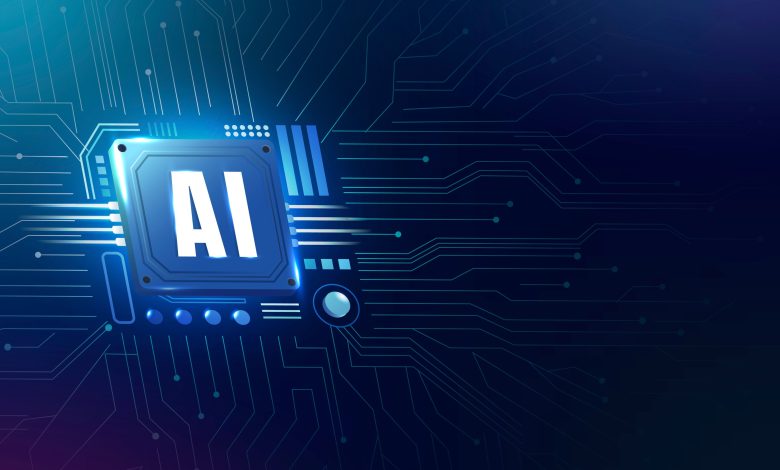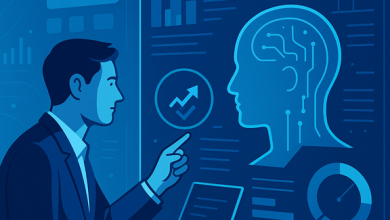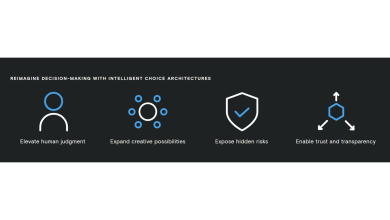
There was a time when ‘automation’ was synonymous to flowcharts, static rules, and linear process maps. It promised efficiency, but only when everything followed the script. Today, that model is breaking under the weight of modern enterprise complexity. It calls for intelligence, systems that can think, adapt, learn, and collaborate in real time.
Artificial intelligence (AI) was supposed to bridge that gap between static automation and dynamic decision-making. However, much of what has been implemented to date falls under narrow AI, i.e., discrete, task-specific applications embedded within larger systems. Think fraud detection algorithms, chatbots for customer service, or OCR for document scanning. These systems excel in one task, reacting to inputs as programmed, but they don’t proactively adapt or learn beyond their scope.
This gap between AI’s promise and practice is evident: nearly all companies today invest in AI, but only about 1% consider their AI initiatives truly mature and fully integrated into the business.
That’s where Agentic AI changes the story.
Unlike static tools, Agentic AI systems have been designed to operate with autonomy while keeping humans in the loop. They understand the context, make/suggest decisions/next best actions in real time, and collaborate. Think of them not as tools, but as digital colleagues who don’t wait for instructions to act. For enterprise leaders, this has marked a fundamental shift, from automating tasks to orchestrating intelligent actions.
PwC validated, “The central question isn’t whether to adopt this technology, but how swiftly organizations can integrate it to stay ahead of the competition.” What makes agentic AI so different from everything that came before?
Let’s break it down.
What is Agentic AI and Why Now?
Agentic AI represents the next evolution in enterprise intelligence; it’s autonomous, goal-driven agents that not only execute tasks but also act with context, continuously learn from outcomes, and orchestrate actions across complex enterprise systems. They are your digital team members who are contextually aware, secure, auditable, and integrated into your existing workflows.
This wasn’t feasible a decade ago. But today, three breakthroughs make it pragmatic:
- Large Language Models (LLMs) that understand unstructured data and nuances
- Graph-based reasoning engines that map complex relationships in milliseconds
- Low-code orchestration platforms that bring it all together without extensive coding
With this powerful trio, business leaders can build, train, and deploy such agents at scale, without waiting years to see a return on investment. The shift is already underway. According to Deloitte’s latest industry survey, more than one in four executives (26%) said their organizations have been exploring Agentic AI on a large or very large scale.
Enlisted are seven key capabilities that make Agentic AI powerful for enterprises.
- Autonomy with Accountability
Agentic AI can operate independently. However, can you trust a system that makes its own calls? Yes. Through structured logging, explainability modules, and audit trails, enterprises can monitor and validate AI-backed decisions, essential for industries with compliance mandates.
For instance, in a loan underwriting process, an agentic system automatically handles all the incoming applications. It goes a step further by dynamically re-prioritizing them based on factors like risk scores, recent regulatory updates, or internal service-level agreements while keeping humans in the loop for intervention if needed.
- Human-in-the-Loop Collaboration
AI agents will amplify human talent. Consider the case of customer onboarding in a bank. An intelligent agent can verify documents, cross-check data across multiple systems, and auto-flag discrepancies. But if an anomaly doesn’t align with known patterns, the system escalates it to a compliance officer, along with a full context stack.
This human-in-the-loop approach ensures that while routine STP cases are administered swiftly by AI, edge cases get the nuanced attention only a human can provide. The process becomes faster and safer, building trust in the AI’s decisions.
- Contextual, Real-time Decision Making
Agentic systems excel in dynamic environments by ingesting and processing real-time data to optimize decisions. They adapt instantly as conditions evolve. For instance, in insurance claims processing, an AI agent monitors incoming claims, analyzes historical trends, verifies policy terms, and predicts potential fraud. By integrating live inputs (from telemetry, external data feeds, and internal triggers), it course-corrects judgments midway, ensuring contextually relevant and prompt responses.
- Domain-specific Expertise at Scale
Modern enterprise AI agents are trained on industry-specific rules, documentation standards, workflows, and edge cases. This allows them to operate with deep contextual understanding. For example, in a compliance setting, an insurance AI agent can scan policy documents for regulatory gaps and flag inconsistencies. Moreover, it can auto-generate audit-ready reports and suggest corrective actions, minimizing manual review and enhancing accuracy across large-scale operations.
- Low-code Customization for Business Teams
One of the significant barriers to AI adoption is the gap between business intent and technical execution. Agentic AI platforms make it easy with visual builders and logic designers that allow business users to configure and fine-tune AI agents for their unique processes.
For example, a bank relationship manager can set up an AI agent to watch for early signs that a customer might drop (like reduced account activity or missed logins). When the agent identifies these patterns, it can automatically trigger personalized outreach, such as emails, offers, or service calls, to re-engage the customer. All this happens without writing a single line of code.
- Secure by Design, Scalable by Default
Does growing faster always mean growing riskier? Not when security is baked in. Agentic AI systems are built with security at their core. They include enterprise-grade features like role-based access controls, coded data guardrails, encryption, compliance checks, and detailed audit trails. This ensures data stays protected, and usage remains transparent.
Moreover, they are built to scale. Enterprises can start small, using agents for simple tasks, and gradually expand to more complex, cross-functional processes. This modular approach enables organizations to innovate without disrupting core operations.
- Operational Intelligence and Continuous Learning
Agentic AI gets smarter with time. These systems are equipped with feedback loops and reinforcement learning, which means they get smarter the more they operate. For example, an AI agent can manage internal IT support tickets. Over time, it starts to recognize patterns, like recurring printer issues or software errors. It can then recommend permanent fixes or even run automated scripts to prevent those issues before they happen. This leads to fewer disruptions, happier employees, and lower IT cost.
From Automation to Autonomy: The Next Leap
Agentic AI isn’t just another tech upgrade. It’s the connective link that ties people, systems, and data into one smart, self-improving network. This shift isn’t merely technical; it’s strategic. It’s about how we rethink the very way work gets done. The winners are those who move beyond workflows to outcomes, rules to reasoning, and tools to teammates.
The numbers back it up. Accenture research found that the proportion of companies with fully modernized, AI-led processes nearly doubled from 9% in 2023 to 16% in 2024. The early movers are crushing it, growing about 2.5X in revenue and productivity compared to their peers.
As leaders, the choice is clear, either keep optimizing yesterday’s processes or start designing for tomorrow’s possibilities. The next competitive edge won’t come from doing things faster, it will come from doing things differently. The future isn’t just about automation, it’s about evidence-based trusted autonomy. Enterprises that embrace this shift won’t just keep up. They’ll define what’s next.




